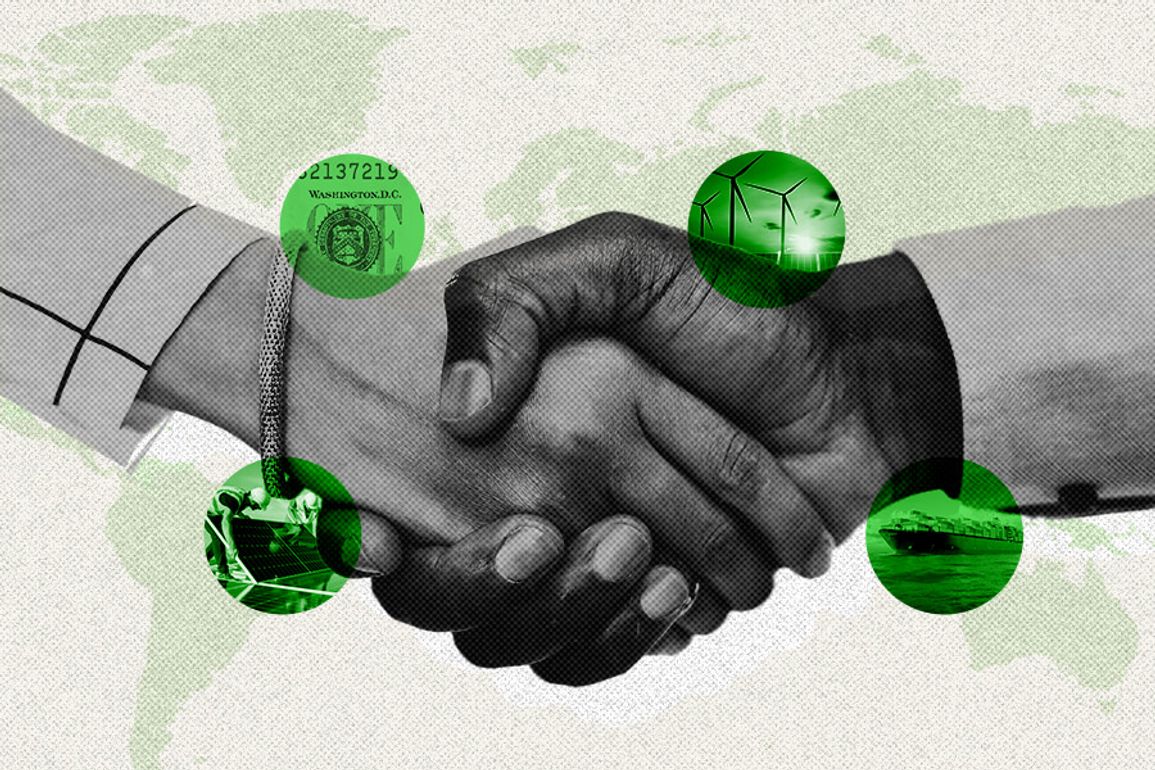Cipher News: "Three Crucial Ways Trade Policy Can Help Us Reach Net Zero"
12/07/2022 | Silverado Policy Accelerator
In a new op-ed for Breakthrough Energy's Cipher News, Silverado's Co-Founder and Executive Chair Maureen Hinman explores three ways that trade policy can help reinforce global climate objectives and move the world toward a net-zero future.
Three crucial ways trade policy can help us reach net zero
Trade policy is not commonly thought of as a tool for combating climate change. After all, the proliferation of trade and global supply chains has contributed to the rise in global carbon emissions by facilitating the spread of carbon-intensive methods of production and transportation.
But trade policy presents a powerful—and largely underutilized—set of tools to help nations combat climate change. Trade policy has already raised environmental standards and broadly improved environmental enforcement, but the larger climate community is just beginning to understand the full potential of climate-focused trade tools.
Building on a new report from the World Trade Organization (WTO) presented at COP27 last month, my team and I propose three broad areas where trade policy can help advance and re-enforce global climate goals to achieve a net-zero future by 2050.
First, trade policy is critical to creating a global economic environment that supports green technology transfer and environmental innovation.
We need an ambitious environmental goods agreement to help reduce the price of clean technologies and make them more readily available across the developed and developing worlds. Such an agreement would aggressively target existing barriers to trade, starting with eliminating tariffs on environmental goods, like solar panels, wind turbines and heat pumps.
In the mid-2010s, the WTO negotiated but never concluded such an environmental goods deal. We suggest reviving the efforts despite significant institutional barriers, including difficulty defining the scope of environmental goods and concerns around the free-rider problem. Without a baseline deal, it will be difficult to achieve more novel and ambitious trade and climate arrangements.
Moreover, we need trade measures to promote and protect innovation that will support green technology transfer in the long term. For truly sustainable tech transfer, developed and developing nations need to foster an economic environment together where companies are willing to invest in climate innovation around the world.
One major obstacle is innovators’ legitimate concern that technology transfer leaves them vulnerable to intellectual property (IP) theft. Countries must determine whether the IP commitments in existing free trade agreements need to be updated to support green technology transfer and design new trade agreements to protect cleantech IP rights from the start.
Without a forward-leaning IP regime, developed countries will continue to see cutting-edge investments while developing partners receive less effective last-generation technologies.
Second, countries can use trade policies to address the inevitable material shortages and moral tradeoffs that accompany the green energy transition. Large-scale decarbonization entails many risks, ranging from shortages of the critical minerals needed to make clean technologies like electric vehicle batteries to ethical concerns about forced labor and ecological degradation.
Trade can help ameliorate these risks. Countries can use trade policies to advance the principles of circular economy, chiefly through the creation of robust reverse supply chains that support trade in recyclable and partially recycled products.
Designing trade tools that promote traceability and transparency can ensure recyclable products are recovered safely and efficiently to compete with mined virgin materials and keep trash out of the supply chain.
Countries can also prioritize joining trade regimes that promote high labor and environmental standards, such as the U.S.-Canada-Mexico Agreement.
Finally, countries can use trade policy to hold each other accountable for meeting global climate goals.
It is currently cheaper to produce goods in countries with lower environmental standards, giving industries located in those nations a competitive advantage. These market dynamics encourage “environmental arbitrage,” where companies shift production from countries with high standards to countries with lower standards, leading to an overall increase in carbon emissions.
Environmental arbitrage also makes it impossible for consumers to understand and pay for the true cost of pollution.
Countries can counteract this dynamic using a trade policy called carbon border adjustment (CBA), a tax system for adjusting the price of imported goods at the border based on emissions when and where they were made.
By pricing the hidden differences and leveling the playing field between producers, CBAs eliminate the economic incentives for environmental arbitrage.
The widespread adoption of CBAs, ideally through an international carbon club like the one considered within the G7, also creates the opportunity for additional incentive structures to promote decarbonization. Agreements could allow developing countries, for example, to forgo CBA taxes if they agree to invest an equivalent amount of money in climate mitigation and resilience.
Pillar
Eco²Sec
